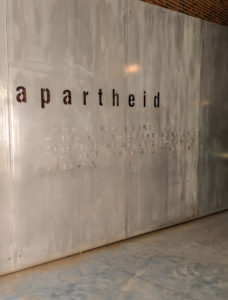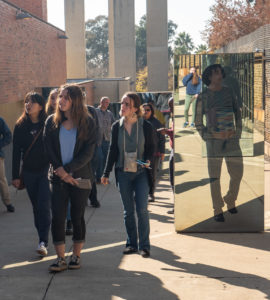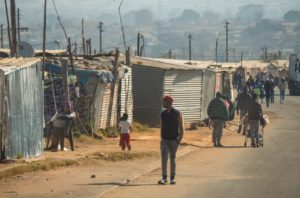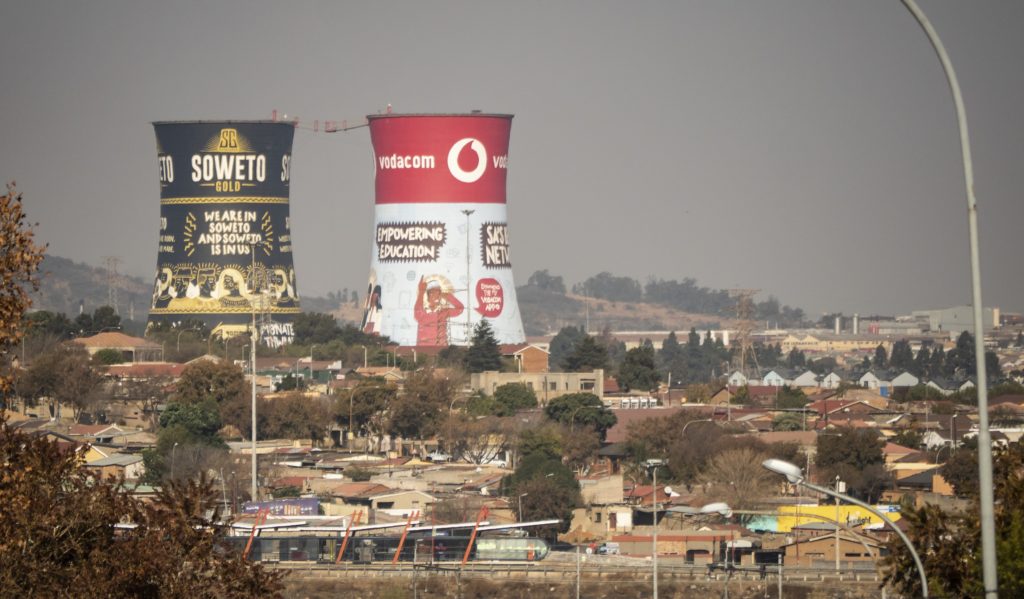

Going to the Apartheid Museum was something to remember. As a class, we studied and researched this topic prior to the trip and it’s been referenced in our time here in South Africa. Walking in and seeing a tank truck with bullet holes was chilling; it made it felt real; it was real. Everything I saw impacted me and made my time here more meaningful.
The Apartheid Museum was not a boring museum. I was invested in everything I read and saw. I could block out the noises around me and just focus. I saw videos that showed the real struggle that many people faced fighting against the apartheid. Seeing what I did today taught me more than I could have learned from a book. It gave me a new perspective about what happened, and the impact of people who struggled.
After the walk through the museum, we met up with Thulani, the very talented musician and our choir director at Tembisa. He is a gift, and his energy is fun, loving, and joyful. His energy set the mood for the rest of the day. I am thankful to have met him. He has taught me how to be patient, and live in the moment. He is everybody’s best friend, so having him be our tour guide for the day brought joy to everyone’s hearts.


In all honesty, when our bus pulled up to the gates of the Johannesburg Apartheid Museum, I’d rather have gone to the theme park next door. The building is the embodiment of “don’t judge a book by its cover,” with its bare front facing exterior and its empty parking lot, but the contents of its interior far exceeded my expectations. The museum was a work of art, carefully thought out, with each twist and turn showing you a new aspect of life during apartheid.
Your first experience of the museum is being split apart from your friends and group, as everyone’s ticket indicated whether you would be white or non-white. You were thrown into either category without regard to your actual race, and then the two categories were split off into two different entrances. Each group experienced the full museum, but not in the way that the other had. This really set the mood for all the feelings of disconnection, separation, and the “us vs. them” mentality that apartheid brought.
There is no real way to explain the museum that would truly do it justice, but there were a few exhibits that stood out to me. There was a replica jail cell, the size of a twin sized bed, in which many would’ve been held in solitary for years at a time without trial. There was a ceiling from which hung over a hundred nooses, one for each political enemy that the South African government had assassinated. There was raw footage of marches and protests, and the Casspir military vehicle which had been used to patrol townships and played an integral part in the youth massacre of June 16th, 1976.

On June 16th, 15,000 students of Soweto marched in protest of the mandatory teaching of Afrikaans and their poor education system. On this day, we landed in Cape town and on this day 43 years ago 600 students were killed, the youngest among them being 12-year-old Hector Pieterson. He was in the area by accident, was fatally shot, and then carried down the road by Mbuyisa Makhubu, to the place where he would breathe his last breath. On this spot now stands a memorial that former President Mandela helped bring to life.
After our museum trip, we were once again met by our fun-loving choir director, Thulani, who acted as an impromptu tour guide through the township of Soweto. Soweto is a large township with a long history of struggle. This struggle is most easily defined by the two, now out of commission, nuclear power plant towers that mark the center of the township. We experienced many aspects of this township including the earlier mentioned Hector Pieterson Memorial, Mandela’s previous house now turned museum, the street markets, and we got a first-hand history lesson from locals.
From walking the halls of the museum, to walking the streets mentioned in exhibits, our day truly followed along the path of the struggles of apartheid. To be honest, we have done so much today that my brain has yet to process it all, but I know that the lessons I learned today will be ones I will not forget.

You must be logged in to post a comment.